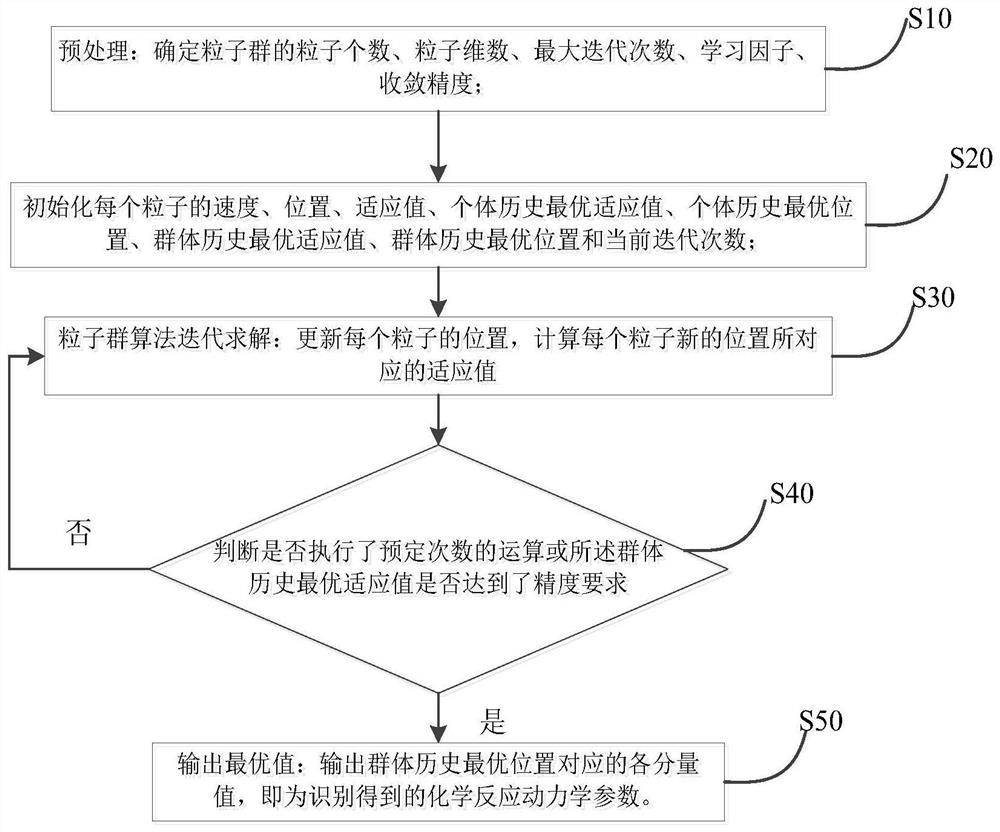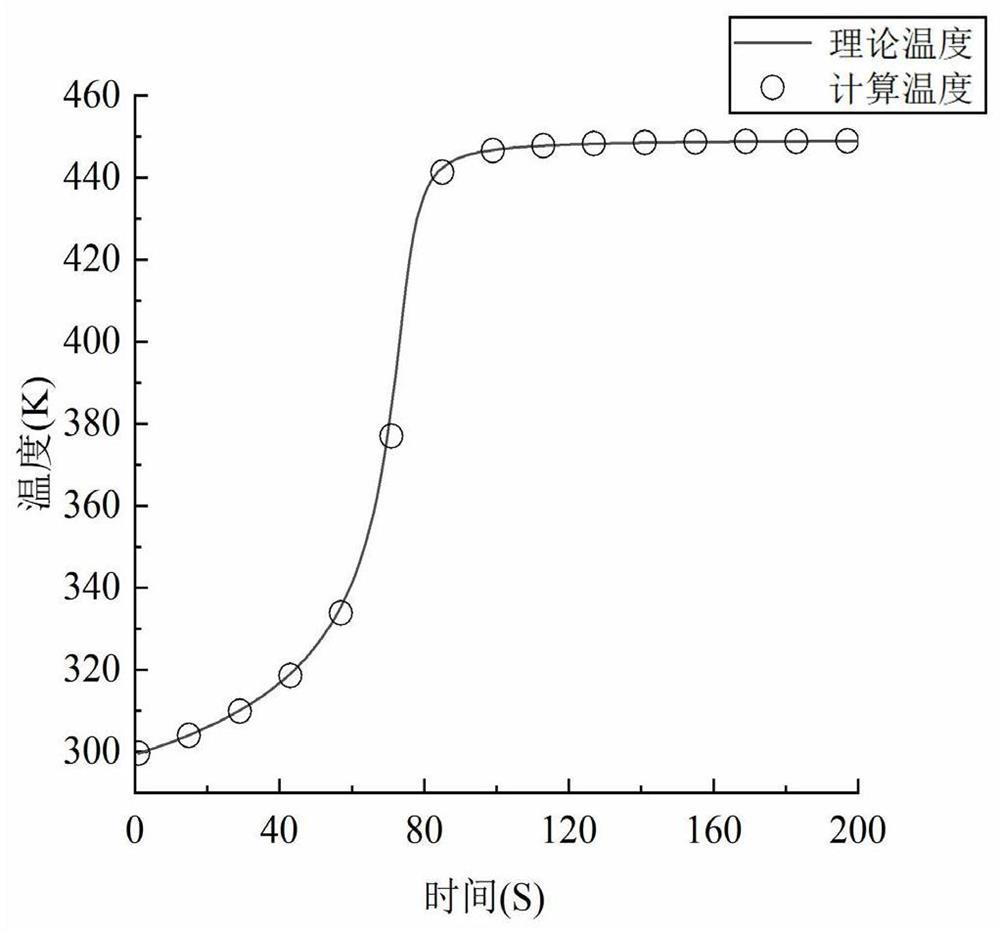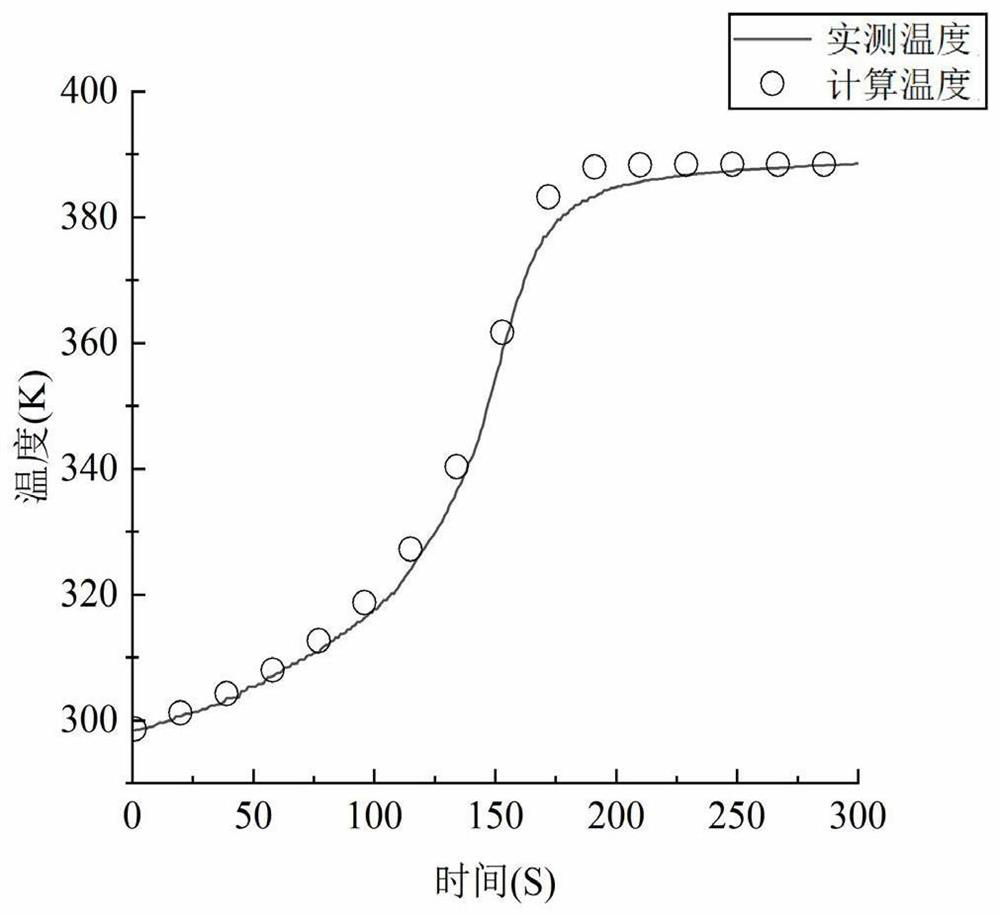Polymer slurry parameter identification method based on particle swarm algorithm
A particle swarm algorithm and parameter identification technology, applied in the field of chemical grouting, can solve the problems of large error and cumbersome chemical reaction kinetic parameter process, and achieve the effect of fast and efficient identification and accurate parameters
- Summary
- Abstract
- Description
- Claims
- Application Information
AI Technical Summary
Problems solved by technology
Method used
Image
Examples
Embodiment 1
[0055] In this embodiment, the kinetic parameters of the chemical reaction of the non-aqueous reactive polymer are calculated using the particle swarm algorithm-based identification method to calculate the kinetic parameters of the chemical reaction of the polymer to verify the effectiveness of the present invention. Firstly, set the slurry component concentration c in the calculation model OH,0 4000mol / m 3 , c NCO,0 4000mol / m 3 , the density is 1100kg / m 3 , heat of reaction 7.49×10 4 J·mol -1 , specific heat 1800J / (kg·K).
[0056] S10. Preprocessing: determine the number of particles in the particle swarm n=60, the particle dimension d=2, the maximum number of iterations T=50, and the first learning factor c 1 =0.5, the second learning factor c 2 =0.5, convergence precision ε=0.00001;
[0057] S20. Initialize the velocity, position, fitness value, individual historical optimal fitness value, individual historical optimal position, group historical optimal fitness valu...
Embodiment 2
[0095] In this embodiment, a particle swarm algorithm-based identification method for chemical reaction kinetic parameters of non-aqueous reactive polymers is used to calculate the experimental data to obtain the chemical reaction kinetic parameters of the polymer. Firstly, set the slurry component concentration c in the calculation model OH,0 2110mol / m 3 , c NCO,0 4600mol / m 3 , the density is 1000kg / m 3 , heat of reaction 7.49×10 4 J·mol -1 , specific heat 1800J / (kg·K).
[0096] In this embodiment, the steps of using the particle swarm optimization-based chemical reaction kinetic parameter identification method for non-aqueous reactive polymers are the same as those in Example 1 using the particle swarm algorithm-based chemical reaction kinetic parameter identification method for non-aqueous reactive polymers. The steps are the same and will not be repeated here.
[0097] Table 2 is the final chemical reaction kinetic parameters obtained in Example 2 of a particle swar...
PUM
 Login to View More
Login to View More Abstract
Description
Claims
Application Information
 Login to View More
Login to View More - R&D
- Intellectual Property
- Life Sciences
- Materials
- Tech Scout
- Unparalleled Data Quality
- Higher Quality Content
- 60% Fewer Hallucinations
Browse by: Latest US Patents, China's latest patents, Technical Efficacy Thesaurus, Application Domain, Technology Topic, Popular Technical Reports.
© 2025 PatSnap. All rights reserved.Legal|Privacy policy|Modern Slavery Act Transparency Statement|Sitemap|About US| Contact US: help@patsnap.com



